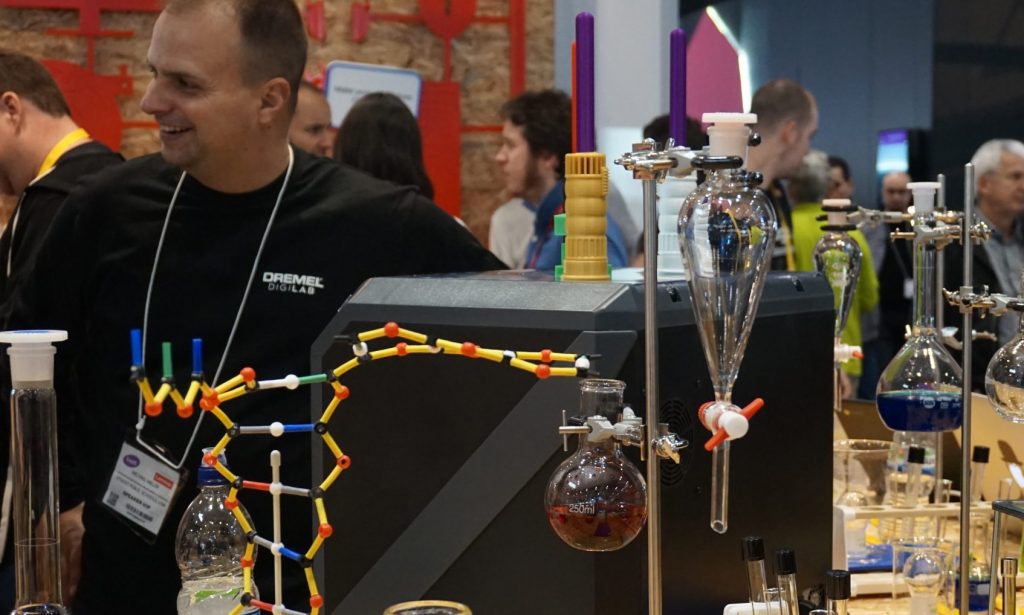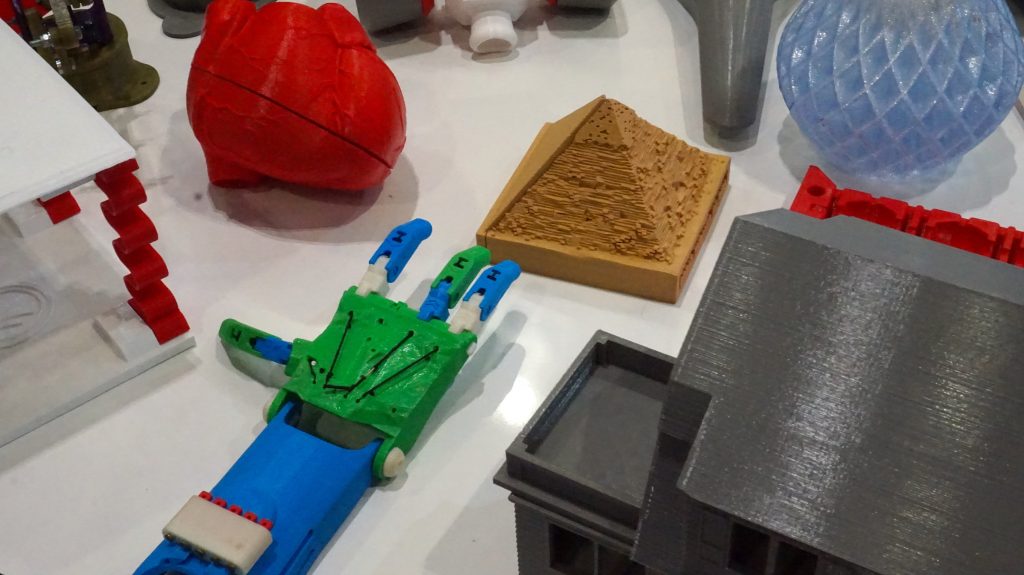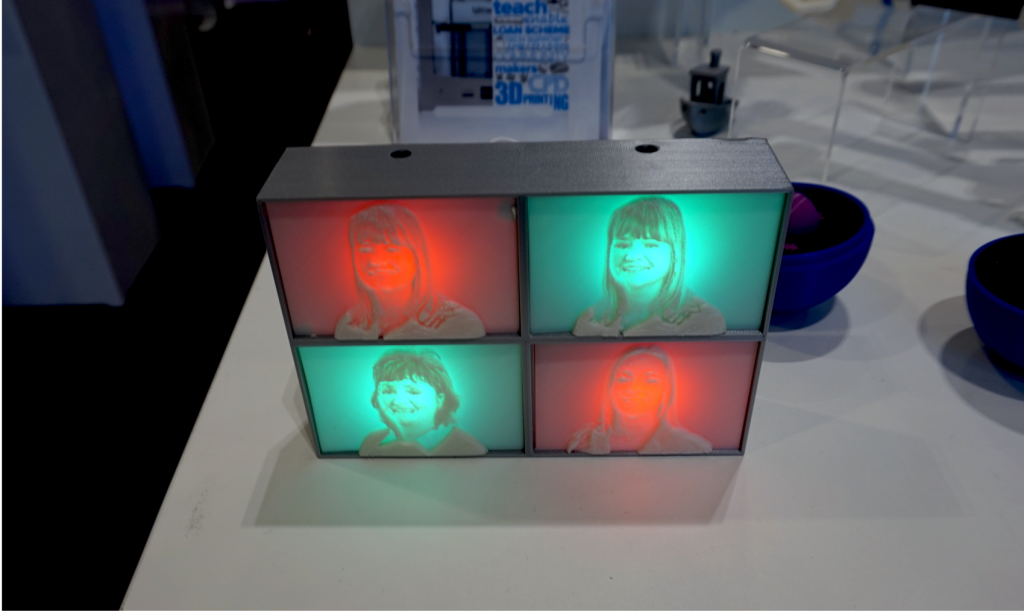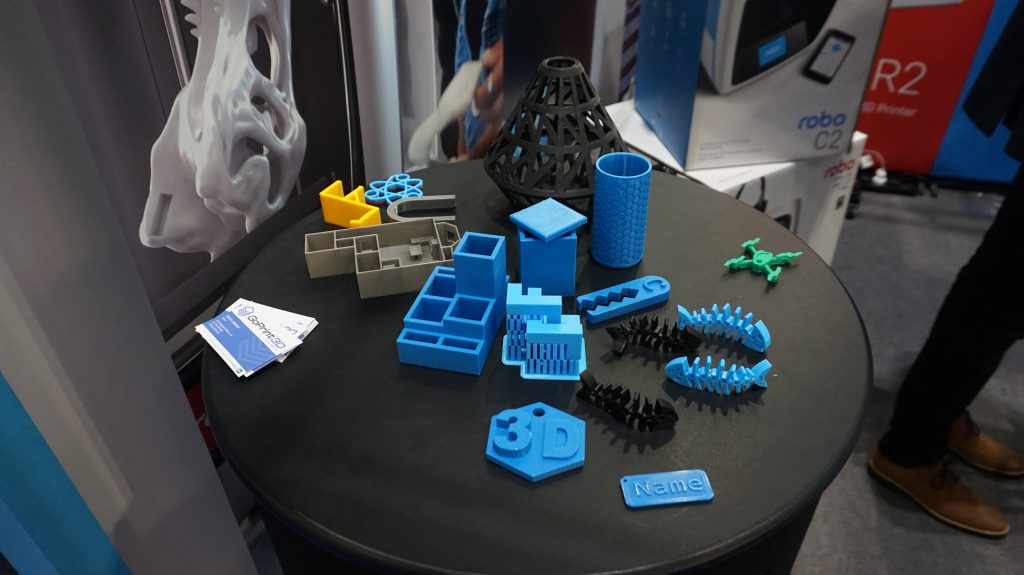The news is often dominated by 3D printing’s role as a “disruptive” technology and its future in Industry 4.0. Behind the buzzwords, however, is the reality of an additive manufacturing skills gap, and the need for a future workforce with some 3D printing already under its belt.
3D Printing Industry went to the BETT show 2018 in London to take a closer look at how UK public bodies, manufacturers, resellers, and services are addressing this problem, and to see how and educational projects are using 3D printing to prepare the next generation.

Department for Education guidelines?
At BETT, a civil servant at the UK Department for Education, who specializes in technology in education tells me that rather than issuing direct guidelines on 3D printing in the curriculum, the government’s prerogative is to instead “empower people to make effective decisions,” and let schools incorporate the technology themselves.
The last official report released by the Department for Education outlined the results of a pilot scheme to “explore the potential for use of 3D printers to enrich teaching across STEM.” The report, from October 2013, concluded that “3D printers have significant potential as a teaching resource.”
It stated that 3D printing “can have a positive impact on pupil engagement and learning if schools can master how to use the printers in an effective and meaningful way,” whilst re-asserting that “individual schools decide how to integrate new technologies into the curriculum.”
Almost five years later, a number of manufacturers, suppliers and independent education projects are rising to the challenge and facilitating 3D printing education from primary through to further education.

MakerBot and the 3D StarterLab
One of the manufacturers who has taken the mantle of providing 3D printing in schools is MakerBot with its StarterLab program. Launched in 2015, the StarterLab options combine a number of MakerBot Replicator+ 3D printers, MakerBot Replicator Z18 3D printers, filaments, and print heads.
Installation and training are also provided through local partners. MakerBot offers a range of free online educational resources, most notably The MakerBot Educator’s Guidebook, which contains a 3D printing introduction, instructions, classroom setup tips, and a range of projects. Some of these were recreated at the company’s BETT stand.
Notably absent are direct references to specific school curricula, presumably due to MakerBot’s worldwide target customer base.
While MakerBot does distribute its StarterLab packages in the UK, the program has gained much more traction in the US. This is partly thanks to partnerships with the University of Maryland’s A. James Clark School of Engineering and Montclair district high schools in New Jersey.

Ultimaker and CREATE education
Exhibiting at BETT with Ultimaker is the CREATE Education Project, which was founded by UltimakerGB director Paul Croft and provides free resources and support to help educators introduce and integrate 3D Printing into primary, secondary and higher education.
Importantly, offered alongside weekly 3D printing projects applicable across the curriculum are teacher-specific professional development guides. These give more precise advice on how to integrate 3D printing into curricula and access a 3D printer loan scheme.
School workshops are delivered by a network of CREATE Ambassadors and members of the CREATE team across a network of hubs and maker spaces. As Paul Croft explains to me,
“The CREATE Education Project was set up to make 3D technologies available to everyone. From the feedback we received we knew that collaborating with the pioneers in education, building a community, sharing best practice and enabling peer to peer learning were critical to aiding the adoption of new technologies.”
The CREATE education project has already seen success and was recently announced as a 5 Star Winner in the STEM Category of the Tech for Teachers Awards. The end goal of the initiative is, ultimately, to equip educators with the necessary resources to prepare a new generation for 3D printing in industry.
“The success of the initiative leads to more and more people getting involved and more opportunities being created,” adds Croft. “Long-term we believe that by removing the barriers to adoption, including budgets and availability of resources, we will be able to address the skills gap in this country and beyond by giving the educators the tools they require to reap the learning and development benefits with confidence.”

GoPrint3D and Learn by Layers
Other programs are offered directly by distributors with “out-of-the-box” lessons aligned to specific curricula. While there is less cross-curricular flexibility, introducing 3D printing to classes is often easier, and it requires less planning.
One such company is Learn by Layers, a 3D printing resource service founded by educator Philip Cotton and partnered with UK-based distributor GoPrint3D. The lesson packs from Learn by Layers are aligned with curricula in the UK, USA, and Australia.
At BETT, a number of 3D printed objects from the Learn by Layers lessons are on display at the Robo stand, where GoPrint3D is making them on Robo C2 3D printers.
Explaining the decision to partner with Learn by Layers, GoPrint3D sales director James Blackburn says that “often when we speak to teachers they are impressed with a 3D printer’s capabilities, such as with the Robo C2, and whilst they can see the potential use of such a system in their classroom, they are often unsure of how to go about teaching pupils with it.”
Targeted at KS3 and KS4 education levels in the UK, and Grade 6 through to 10 in the US, the program aims to introduce 3D printing to educators who may be unfamiliar with a technology that was, until recently, relatively inaccessible.

The state of education and 3D printing
With education budgets and priorities in constant flux across the many tiers of the UK school system, it may seem difficult for educators to know where to start with 3D printing.
But it is clear that introducing 3D printing across the curriculum can not only make education more hands-on and interactive, but it also ensures that students who do not go down traditional STEM routes of education are still literate in 3D printing technology.
After all, it is easy to forget how rare computers were in schools 20 years ago.
Let us know what you think the best 3D printing innovation of the year is. Make your nominations for the 3D Printing Industry Awards 2018 now.
For more stories on 3D printing and education, subscribe to our free 3D Printing Industry newsletter, follow us on Twitter, and like us on Facebook.
Featured image shows a presentation at the Microsoft Learning Academy on incorporating Minecraft into learning at BETT 2018. Photo by Rushabh Haria.


